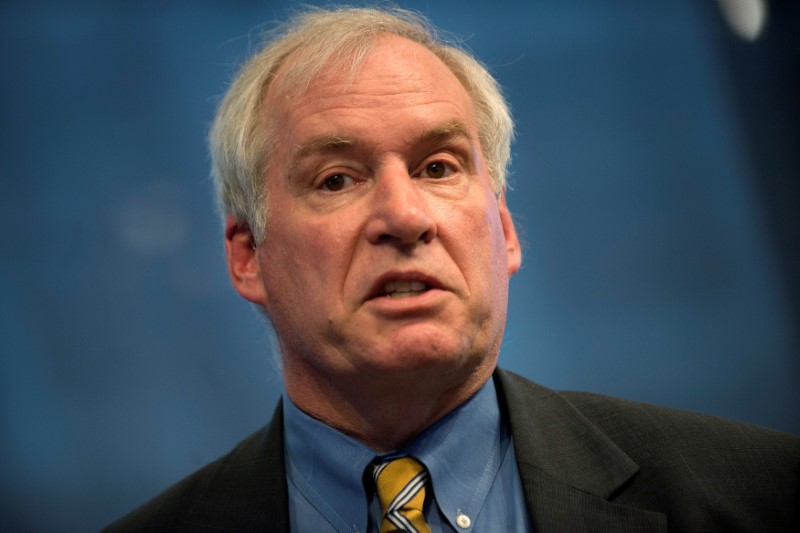 © Reuters. File Photo: The Federal Reserve Bank of Boston’s President and CEO Eric S. Rosengren speaks in New York
© Reuters. File Photo: The Federal Reserve Bank of Boston’s President and CEO Eric S. Rosengren speaks in New York(Reuters) – The recent drop in U.S. unemployment poses a bigger risk to the sustainability of the economic recovery than lower-than-expected inflation, Boston Fed president Eric Rosengren said Friday.
Inflation has run stubbornly below the Fed’s 2-percent goal even as unemployment has fallen to 4.1 percent and looks set to decline further. Some Fed policymakers have urged waiting on rate hikes until inflation shows signs of swinging upward.
To Rosengren, however, the unexpectedly rapid decline in the jobless rate is “the bigger risk for short-run policy” and the sustainability of the recovery. His comments, prepared for delivery to the Global Interdependence Center in San Diego, suggest he will support further gradual interest-rate hikes this year, though he gave no specifics.
Rosengren devoted the bulk of his speech to make a case for changing Fed policy to make it more effective in a world where many policymakers expect slow growth and low interest rates to be more or less permanent conditions.
A number of Fed policymakers have recently joined the call for such a change, arguing the Fed’s 2-percent inflation target, adopted six years ago, is not suited to the post-crisis economy and could make future recessions harder to combat.
Rosengren’s solution, proposed publicly for the first time in detail in his Friday speech, is to adopt a target range for inflation of 1.5 percent to 3 percent, and then each year setting a goal for inflation within that range, depending on current conditions.
“Using an inflation range would trade off the costs of more effective policy responses to recessions (and the potential financial stability risk that may attend prolonged low interest rate periods), with the costs of having somewhat less certainty about what the inflation rate would be in the long run,” Rosengren said.
If the Fed were using such a framework in the current economic environment, Rosengren said, it could aim for inflation on the high end of the range, and raise rates more gradually. If the labor force or productivity were to grow faster, the Fed would aim to reduce inflation within the range, he said.
Other Fed officials have promoted different approaches to policy to give the central bank better leverage against future recessions. It is not clear which policy, if any, will take the place of the current approach.
Fusion Media or anyone involved with Fusion Media will not accept any liability for loss or damage as a result of reliance on the information including data, quotes, charts and buy/sell signals contained within this website. Please be fully informed regarding the risks and costs associated with trading the financial markets, it is one of the riskiest investment forms possible.
Source: Investing.com




























